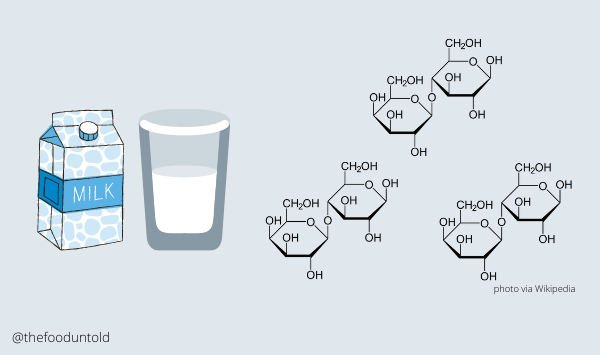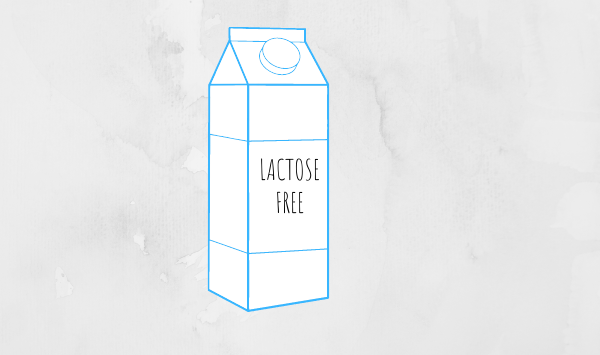
Do you think you are intolerant to lactose? If you do, you are not alone. In fact, there are more people who experience this digestive disorder than those who do not. It is said that around 70% of the world’s population are experiencing intolerance to lactose. That is around 5 billion people! Anyway, what exactly is lactose intolerance? What are the symptoms? The treatment? What do food manufacturers do to help lactose-intolerant individuals?
In this article, we’ll discuss all of them.
Keep reading.
What is lactose intolerance?

Carbohydates is one of the 3 basic macronutrients that we need daily—the other being fats and proteins. Carbohydrates are the main sources of energy that fuel our bodies. In foods, these carbohydrates come in 2 main forms. First are simple carbohydrates. They are so called because they are the most basic forms. Second are complex carbohydrates such as starches and fibers, they are made of many simple sugars strung together.
The simple carbohydrates are categorized into two forms based on chemical structure: monosaccharides and disaccharides. Disaccharides are sugars composed of two molecules of simple sugars. A good example of this is lactose, the milk sugar composed of glucose and galactose. Obviously, dairy products are rich in lactose. Cheese, cream, butter, yogurt, and milk are rich in it. Although out of all these, milk contain the most amount with 13 grams of lactose in 1 cup serving.
The problem is that once inside our body, this milk sugar needs to be broken down and digested in the gut. The enzyme lactase is responsible for this part. Lactase is produced by cells in the small intestine, in the enterocytes. These are cells that help us absorb the nutrients from the food we eat.
The lactase enzyme catalyzes the break down of lactose into simple sugars, glucose and galactose. If the bond between glucose and galactose is cut, then you are fine and good to go. But if the lactose is not broken down, water goes into your intestine via osmosis. As a result, you will feel bloated and experience diarrhea. And what’s more, as lactose travels from your gut to the colon, the natural bacteria that are able to digest lactose will feast on it, producing mix gases of carbon dioxide, methane, and hydrogen. This is what lactose intolerance is.
Symptoms of lactose intolerance
The following are the common symptoms of lactose intolerance:
- Bloating
- Gas
- Vomiting
- Diarrhea
- Nausea
- Abdominal cramps
- Feeling sick
These symptoms typically occur in as early as 30 minutes after consuming dairy product. How bad one may experience these will depend on the amount of lactose consumed, and the degree of intolerance to lactose. Some people may consume low-lactose dairy products, while some may experience these symptoms regardless of the amount of lactose consumed.
Confused between milk allergy and lactose intolerance? As you already know, lactose intolerance is the inability to digest lactose due to lack of lactase enzyme to break it down. While milk allergy, on the other hand, is the abnormal response of the immune system after consuming milk.
One of the main differences between them is that the symptoms of lactose intolerance are less severe. When one has milk allergy, he/she may also experience skin rash and swelling of the lip. And while lactose intolerance generally affects adults, milk allergy is more common in children and infants. Refer to FoodAllergy.org for more regarding this.
You might also like: The Mold Penicillium Roqueforti And Blue Cheese
This syndrome is more common in adults
Remember when you were young? As young mammals, infants can easily digest lactose with ease. This is because they are born with lactase in their intestine. So it is very straightforward as to why they only drink milk. But the production of lactase enzyme decreases with age. And why is that?
The reason is simple. Most babies start eating solid food by the time they reach 6 months old. Their parent would give them healthy carbohydrates such as in the form of applesauce, sweet potato, and corn. And as diet starts involving foods that provide glucose and other carbohydrates, the need for lactase is reduced. This eventually results in gene alteration for lactase—less need for production of the enzyme. The production of lactase significantly goes down at around 3 to 5 years of age.
Lactase persistence are prevalent among Caucasians

But it is not the case for all of us. Remember that 70% of the global population are experiencing lactose intolerance? What about the other 25%? The majority of the 25% that exhibit lactase persistence (ability to produce lactase well into adulthood) are Caucasians, mainly of those are with European ancestry. In fact, according to the World Population Review, 7 of the top 10 countries where cases of lactose intolerance are very low are in Europe. These countries are Denmark, Ireland, Sweden, the UK, Netherlands, Norway, and Belgium. The other 3 are New Zealand, Niger, and Cyprus. While lactose intolerance are more prevalent in countries in Asia and Africa.
Why are these people exhibiting lactase persistence? What is so especially about them? Europeans are historically known for raising and domesticating cows and other animals for dairy products like milk and cheese. In fact, dairy farming development happened mostly in East Europe by the sixth millennium BC. And since Europe experiences a temperament climate all year-round, dairy farming could be maintained, and milk and other dairy products could be stored safely for long. This made dairy to be a part of their daily diet.
According to studies, about 4000 years ago, a genetic mutation occurred in ancient Europe that allowed the production of lactase enzyme well into adulthood. More like natural selection, right? However, interestingly, a group of scientists had confirmed that early Europeans could not digest lactose 8000 years ago.
No wonder Europeans and people from other dairy producing countries like New Zealand are one of the tallest people in the world.
Managing lactose intolerance

With billions of people experiencing intolerance to lactose, the lactose-free dairy products is a huge industry, to say to the least. Reports suggest that the lactose-free market is the fastest growing segment in the dairy industry. The said segment was valued at USD 12.1 billion in 2020. To no surprise, it is expected to grow at the highest compound annual growth rate (CAGR) in the Asia Pacific region.
With that having said, food manufacturers are more driven to provide a wide range of products for consumers who are intolerant to lactose. Most of these products may be fortified with certain nutrients—especially calcium that milk products are naturally rich in. Read the nutrition label before purchasing them.
By taking “lactose-free” or “lactose-reduced” dairy products
You may lactose-free milk or other dairy products low in lactose. The process of manufacturing them is very simple. The enzyme lactase is added in the milk to break down, and turn lactose into simple sugars glucose and galactose. This process also produces products that are sweeter than regular dairy. Today, dairy products including cheese, butter, and yogurt now have their lactose-free counterparts.
Another dairy products you can go for are “lactose-reduced”. These products are those that contain significantly lower amount of lactose. While a glass of milk contains the most amount lactose, Cheese (0.1 g lactose per 30 g of cheddar cheese) and butter (0.03 g per 5 g) are very low in lactose. Aged and ripened products like cheeses are particularly low in lactose. The longer the aging process, the lower the lactose because cheese bacteria break the remaining lactose down.
According to the FDA, to make sure a product is indeed a lactose-free version, carefully read the label, and look for words such as “lactose-reduced or “lactose-free”. However, the agency has no definition of such terms. Because of this, a lactose-free dairy product must be totally free of lactose. While a lactose-reduced dairy product must have a significant amount of reduction in lactose. But manufacturers are encouraged to have label information that is truthful and is not misleading to the consumer.
Opt for dairy-free or non-dairy products
Dairy-free and non-dairy products are not only good for individuals who are intolerant to lactose, but as well as those with milk allergy. Dairy-free products are those without milk products or milk ingredients such as lactose, casein or whey.
But be wary though. This is because up to now, there is no regulatory definition that actually exists for this term. Therefore, the FDA has no existing regulations as to how manufacturers use the term on their product labels. So there is no assurance if what you are buying is indeed dairy-free. However, like already mentioned, the FDA does not allow misleading or false statements or claims on product labels. Read the product information to help you decide.
Common dairy-free products include alternative milk like soy milk, peanut butter, soy cheese, and protein fruit bars.
Non-dairy, on the other hand, has an existing regulatory definition. But this term makes most people confused because the FDA allows the use of milk ingredients such as milk protein casein and whey in non-dairy products. Furthermore, even experts and professionals alike believe that the use of the term, as the FDA regulates, is nonsensical.
But again, read the product label to help you decide. I suggest going for vegan-based dairy alternatives that are fortified with calcium like soy and coconut milk.
By taking lactase supplement
You can still enjoy these dairy delights by taking over-the-counter lactase supplement. This comes in the form of capsule or tablet to help you digest lactose. Such supplement is prepared and purified from certain yeasts such as Aspergillus niger or C. pseudotropicalis. And if you are wondering, it is tummy-friendly and do not cause harm. In fact, according to the FDA, lactase supplement is generally recognized as safe (GRAS) provided that it is used only as aid for digesting lactose.
So that’s about it. Have I missed anything? Or perhaps you might want to add something. Either way, share it by leaving a comment below. 🙂


